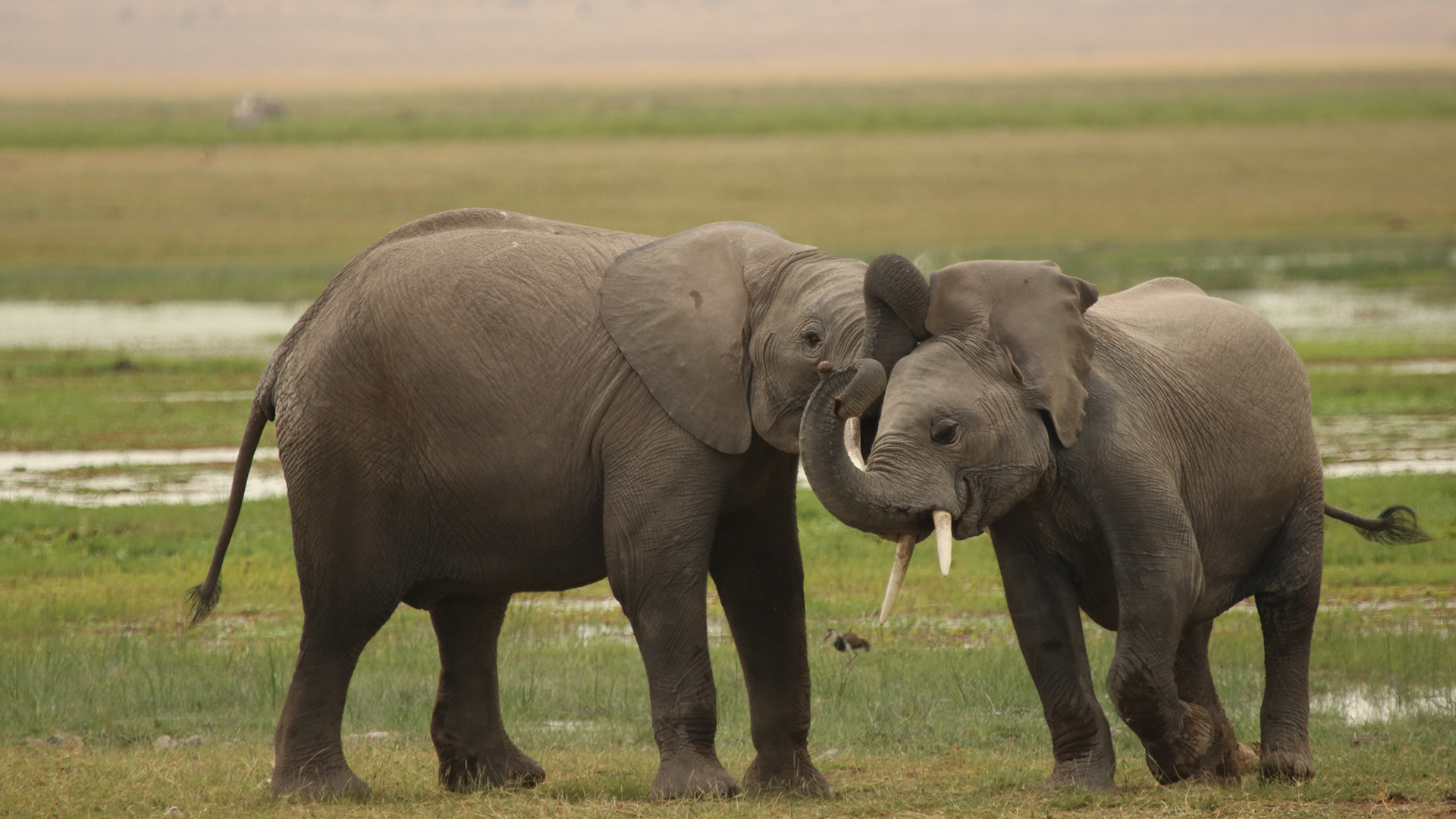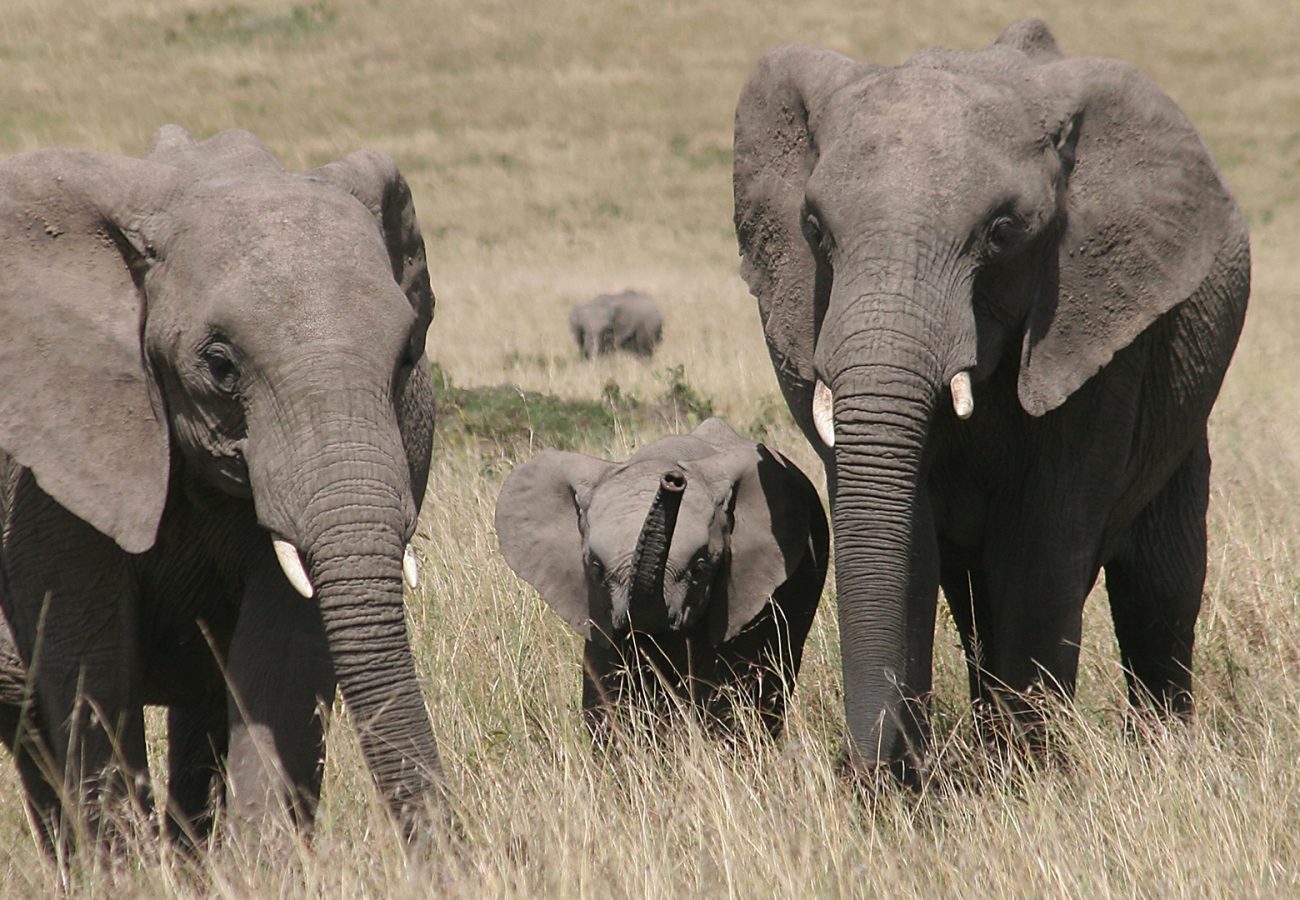Elephants are under threat. Poaching for the illegal ivory trade, deadly conflict with people and loss of habitat are pushing them to the brink of extinction. 100 years ago, between 5-10 million elephants roamed Africa. Today, only around 415,000 remain. There are two species of elephant in Africa: the Endangered African savannah elephant and the Critically Endangered African forest elephant.
But with the help of our supporters, we’re working in the field to conserve wild elephants and the places they call home in Kenya and Liberia.
The conservation projects we run and support are holistic, looking at the big picture to enable people and elephants to live side-by-side.
This includes:
- monitoring of elephant populations
- tackling conflict with people by working with communities to put practical measures in place
- supporting ranger patrols to reduce poaching
FIND OUT MORE ABOUT AFRICAN ELEPHANTS
AFRICAN ELEPHANT CONSERVATION EFFORT
SAVING MERU’S GIANTS
LOCATION: Meru Conservation Area, Kenya, East Africa.
GOAL: To reduce human-elephant conflict and enable people and elephants to coexist.
THREATS: The Meru Conservation Area, including Meru National Park, Kora National Park, Mwingi Reserve and Bisanadi Reserve, is an important habitat for elephants. In the 1980s, poachers reduced the elephant population from 3,500 to just 210.
Since 1998, with the help of a number of translocations, the elephant population has steadily grown. However, as elephants recover, more and more habitat outside of protected areas is being converted to agriculture and pastoral lands, steadily increasing conflict between humans and elephants. This is becoming a significant issue for the communities and the elephants in the Meru Conservation Area.
Elephants frequently forage on crops, which destroys the income and livelihoods of farmers living alongside them. This results in elephants being persecuted, tormented, and sometimes killed. Human-elephant conflict can also mean people have negative attitudes towards them and other wildlife. This conflict has put the future of elephants in the Meru Conservation Area and beyond in jeopardy. Effective conservation solutions, developed with local communities and the Kenya Wildlife Service, must be introduced.
ACTIONS: In 2021, Born Free launched Saving Meru’s Giants, with the ultimate aim of enabling people and large herbivores to coexist. This programme monitors and identifies individual animals, and implements nature-based solutions to prevent crop loss and damage by elephants.

A yellow beehive being used to create a fence to protect crops from elephants
We also work with the community to address challenges they face which make it harder for them to live alongside wildlife, such as poverty, poor access to services and poor education. Our Conservation Ambassador team are selected from and work within their own communities to put in place initiatives aimed at addressing these issues.
One of our core initiatives is the construction of beehive fences around farms in the community lands around Meru National Park. These simple, low-cost fences were developed and trialled by Save the Elephants. They’ve been been demonstrated to be an effective deterrent to crop-foraging because elephants are naturally afraid of bees. You can find out more about beehive fences and the work of Saving Meru’s Giants on the Saving Meru’s Giants project page.
By addressing human-elephant conflict on the ground, we will reduce the burden that local communities have to bear and remove the barrier to true coexistence between people and wildlife in the Meru Conservation Area.
AMBOSELI TRUST FOR ELEPHANTS
LOCATION: Amboseli National Park, Kenya, East Africa.
GOAL: To study savannah elephants in their habitat, and understand human-elephant interactions.
THREATS: The Amboseli elephant population has been able to live relatively undisturbed and the population has been steadily increasing since the late 1970s. Unlike the rest of Africa, the age structure of the elephant family group has not been skewed by poaching. This makes them ideal for researchers to understand the complexity of elephant’s lives. To be able to effectively conserve elephants, thorough knowledge of their ecology and social structures is vital.
ACTIONS: The Amboseli Trust for Elephants conducts the longest running study of wild African elephants anywhere in Africa. Amboseli National Park, located at the base of Mount Kilimanjaro, is home to some of the most well-known elephant families in the world.

Edwina and Elisnore the African elephants with Kilimanjaro in the background © Amboseli Trust for Elephants
With funding from Born Free, the ongoing research work monitors the social organisation and dynamics, behaviour, cognition, communication, genetics, and demography of savannah elephants, as well as human-elephant interactions.
Field research and monitoring, spatial analysis, and mapping have provided valuable insights into the behaviour and intelligence of African elephants. The research informs elephant conservation and also attracts ecotourists to the Amboseli ecosystem which brings significant financial benefits to the area.


